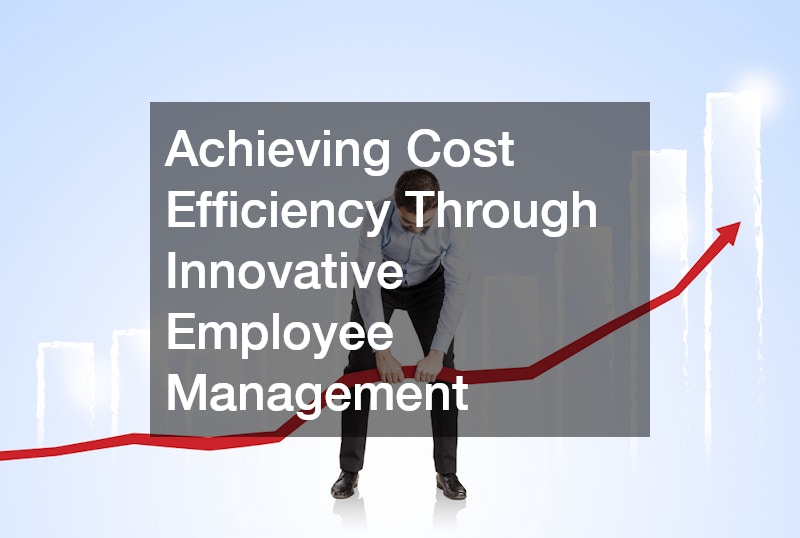Every dollar can make a difference in today’s highly competitive business environment. Employee expenses are one area in which companies look to cut costs without compromising morale or productivity. It may be difficult to reduce employee costs without affecting the quality of work and employee satisfaction. However, businesses can use several strategies to accomplish this.
This article will examine some ways to cut employee costs while maintaining a positive working environment in a highly competitive market.
1. Optimizing Compensation Packages

Compensation for employees is one of the biggest expenses in any business. There are ways to maximize compensation packages and get the best value for money.
Performance-Based Pay
Performance-based pay can motivate employees to do their best work while aligning their interests with those of the business. Businesses can reward employees for their contribution to the success of the company by tying compensation with individual or team performance metrics.
Flexible Benefits Programs
Flexible benefit programs allow employees to select the benefits they value most, reducing costs for both employer and employee. Offering employees a choice of health insurance plans that offer different coverage levels or a flexible account to pay for healthcare costs can allow them to customize their benefits.
2. Embracing Remote Work

The COVID-19 pandemic has made remote work more common. Remote work not only allows you to reduce costs of office space and utilities, but it also gives you access to a larger talent pool.
Virtual Collaboration Tools
Virtual collaboration tools allow remote teams to communicate and collaborate seamlessly, regardless of the physical location. This allows employees to remain productive no matter where they are. Slack and Microsoft Teams are essential for remote working setups.
Flexible work arrangements
Even if employees are only allowed to work part-time remotely, this can save both employers and employees money. Flexible work arrangements can have many benefits, including reduced commuting costs, lower office utility bills, and an increase in employee satisfaction.
3. Streamlining HR Processes
HR plays a crucial role in managing employee costs, from recruitment and onboarding to performance management and benefit administration. Streamlining HR can make businesses more efficient and productive.
Outsourcing Human Resources Services
It is possible to reduce the overhead costs of maintaining an internal HR team by outsourcing certain HR functions. These include payroll processing, benefit administration, and recruitment. Outsourced HR service providers offer specialized resources and expertise at lower costs than hiring full-time employees.
Automating Administrative Tasks
Automation of repetitive administrative tasks such as document management and employee records can allow HR professionals to concentrate on strategic initiatives. Investing in HR software can streamline workflows and increase overall efficiency.
4. Prioritizing Employee Development
Investment in employee training not only improves the workforce’s skills and productivity but also encourages employee loyalty. This reduces turnover costs.
Training and Upskilling Programmes
By offering training and upskilling, you can help your employees gain new skills and knowledge to enhance their careers and roles. Businesses can increase performance by investing in the development of their employees and reducing the need to hire externally.
Internal Promotions and Career Development
Employees can be encouraged to stay in the company by creating clear paths for promotion and career progression. Businesses can save money on recruitment and retain their institutional knowledge by promoting internally.
5. Cost-Control Measures
Cost-control measures implemented across the entire business can reduce unnecessary expenditures and improve financial performance.
Expense Management Policies
Having clear policies and procedures for managing expenses can prevent unnecessary spending and help allocate resources effectively. Businesses can better control their budgets by setting spending limits and requiring prior approval of certain expenses.
Supplier Management and Vendor Negotiations
Negotiating favorable terms can reduce procurement costs and increase the bottom line of a company. Businesses can benefit from better terms and pricing by leveraging economies of scale and building strong relationships.
In a competitive market, reducing employee costs requires a multifaceted and strategic approach that balances employee satisfaction and productivity with cost savings. Businesses can reduce employee costs without compromising the ability to retain and attract top talent by optimizing compensation packages and adopting remote work. They can also streamline HR processes and prioritize employee development. In today’s competitive and fast-paced business environment, each dollar can be a major factor in maintaining your competitive edge and long-term success.
